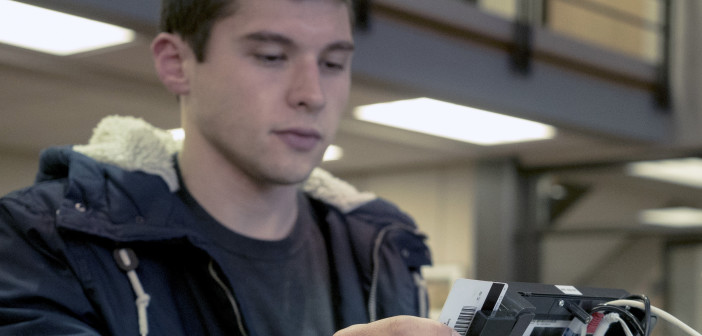*Schlunk.* The sound of another swipe at the printer. The screen shows green but that’s not all that it shows. It also shows students’ monetized print credits. Changes made recently to the printing system bring a psychological impact as well as physical and environmental impacts. The change frees up where students print as someone in Larrance Academic Center could send a paper to the Stadium.
Students from a variety of majors are reporting that they are more aware of how much they are spending as a result of the new display. Karla Santana, a biology and chemistry major, goes through print credits like water by printing out PowerPoints and notes from class.
“The problem with MacBooks is that they don’t let you print both sides, so if I want to print a PowerPoint or a lecture, it only prints on one side,” Santana said.
This phenomenon is wasting paper. Santana uses the majority of her credits printing class notes. “If it did print both sides it would help a lot,” said Santana. The problem appears to be exclusive to MacBooks.
Santana spoke up about the change in the way credits are displayed. “They are starting to use a dollar amount and I don’t think that is necessarily a good thing, because I am already down to like two dollars,” said Santana.
To put this in perspective, students receive $18 for print credit use where one black and white page is 5 cents and one color page is 10 cents. It is the same amount of credits, but displayed differently.
“I average about 150 credits per term,” said sophomore Evan Hanson, an organizational communication major. “I like the new swipe system now that it is up and running; it was a little hard to deal with at first.”
Not every student’s print credit situation is the same. “I hope that there is someone out there monitoring the statistics of students’ print credits in order to get students the right number they need,” said Hansen. “I think it’s different for everyone.”
Commenting on the credits being dollar amounts, Hansen reacted quickly by saying, “I don’t like that. When I use that I feel like I am spending money. I feel guilted by it.” Perhaps this is the intention of the system. The hope may be that students will print less because they feel they are spending money. But is the broke college student’s anxiety worth it?
“There is little-to-no change in what I’m printing,” Hansen said.
People tend to spend more when they aren’t spending real money. Apps on smartphones like Farmville exploit this by having people trade in real money for “farm cash.” This tricks people into more freely spending “farm cash” because they treat it as fake money. What the college seems to be doing is the opposite, by taking a fake currency and making it almost tangible.
Junior Katelyn Becker, an English and secondary education major, also doesn’t like the way credits are displayed. “Immediately, I am just like ‘Oh, God, how much money do I have left?’” Becker was unsure of whether this caused her to print more or less. “I guess I am more conscious of when I am printing.” Becker is a commuter and she estimates she does 65 percent of her printing on campus. She points out that a couple of her professors accept assignments online through Blackboard which factors into the amount that she is printing total.
Monetizing print credits reminds us that paper isn’t free, but is this disturbing students in a good way? If a student ran out of print credits on the old system, they wouldn’t have hesitated to ask a friend. But in this real-money scenario students feel less inclined to use their own credits let alone someone else’s.

